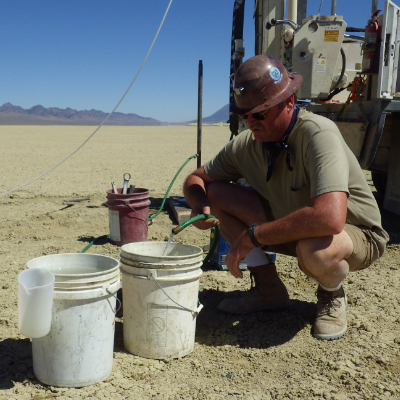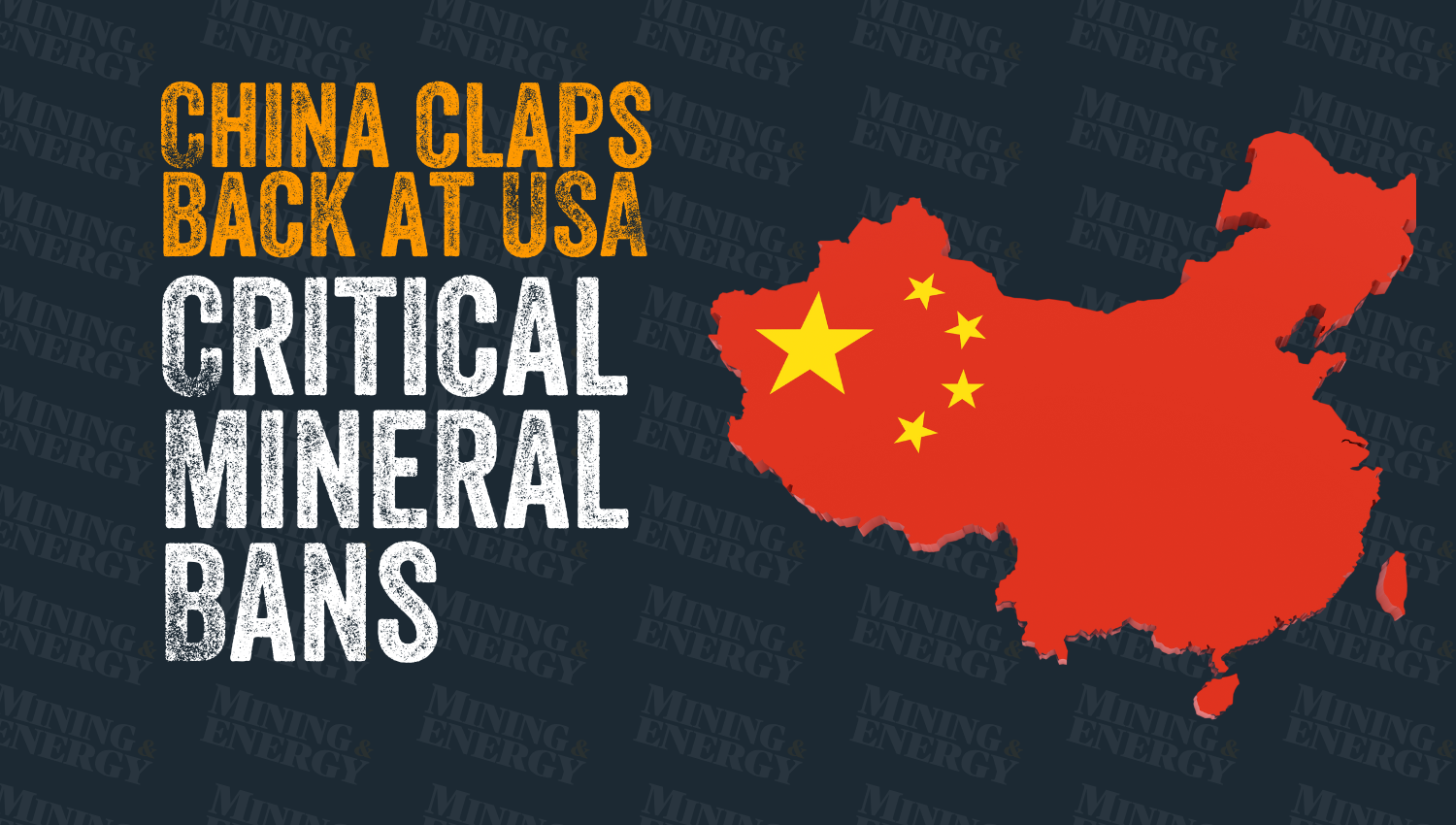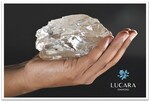Nevada Exploration seeks gold deposits by analyzing groundwater

Nevada Exploration Inc.’s COO, Ken Tullar, collecting groundwater from a direct push sample location — Photo courtesy Nevada Exploration Inc. Nevada
Nevada Exploration Inc.’s COO, Ken Tullar, collecting groundwater from a direct push sample location — Photo courtesy Nevada Exploration Inc.
Nevada Exploration Inc. is a Vancouver-based early-stage explorer that is using a technique that combines innovative technology with old-fashioned legwork to look for gold in its namesake state.
Called groundwater chemistry analysis, the method is being used to search for gold in a part of the world that is known for its huge gold deposits and the increasing difficulty of finding them.
“There is lots of gold in Nevada–it’s unmatched in the world–but the low-hanging fruit has all been picked and traditional drilling can’t find the gold that’s covered under bedrock,” said Nevada Exploration president James Buskard. “We have a tool that can help us find what’s been hidden from view.” He said Nevada Exploration is the first group in Nevada to use groundwater chemistry analysis to advance gold exploration.
“We have proven that elevated concentrations of gold in groundwater can provide a direct indication of gold in bedrock before we invest scarce resources in land acquisition or conventional exploration,” he said.
Unique Nevada topography
Like many other jurisdictions in the world, including British Columbia, Nevada is made up largely of mountains and valleys. Roughly one-half of the state’s bedrock is exposed in the mountains, but the other half is hidden underneath overburden in the valleys. Traditional mineral exploration techniques work well in the mountains, but don’t do so well in the valleys. As a result, most of Nevada's gold mines are, not surprisingly, located in the mountains.
Although prospectors have been diligently exploring Nevada’s exposed bedrock for more than 100 years, they haven’t made any big discoveries recently. According to Nevada Exploration, there is just as much gold waiting to be discovered in Nevada’s valleys, but explorers need a new way to explore in covered bedrock–a new way such as groundwater chemistry analysis.
Groundwater chemistry analysis
Nevada’s valleys are saturated with groundwater, the so-called universal solvent. As groundwater flows, it gradually dissolves bedrock. When it flows near a gold deposit, it retains a unique chemical memory of the encounter, including elevated concentrations of gold.
Because groundwater moves, analysis of its chemistry can provide information about a much larger area than other types of geologic sampling. It can also provide a vector that points back towards its source. A drill hole, on the other hand, collects only a narrow cylinder of rock that is representative of a small area. And with recent advances in environmental technology, groundwater is now relatively easy to sample and analyze.
Water quality data
There are tens of thousands of wells across Nevada and water management agencies have collect large amounts of water quality data. The data is inexpensive, but not easily accessible or readily usable. Furthermore, most of the data is widely scattered across the state in hard-copy, non-digital form. Nevada Exploration says it has collected more than 3,000 samples from springs, wells, windmills and other sources. And it has copied, collated, organized, integrated, digitized and spatially referenced the data and used it to create what it says is Nevada’s largest groundwater chemistry database.
Although the records do not contain analyses of gold, they do contain analyses of many trace elements that are associated with gold, such as arsenic, copper, lead and zinc.
Current company activity and future plans
Founded in 2006, Nevada Exploration has its headquarters in Vancouver and an operations and exploration office in Reno, Nevada. “We have four projects on the go now,” said Buskard. “They are Kelly Creek/Hot Pot, Awakening, Grass Valley and South Grass Valley.” The company's summer 2016 drill program involved drilling multiple targets that its groundwater chemistry analysis program had identified. “We just bought a new drill rig,” said Buskard. “It’s a small-diameter, reverse-circulation drill, the first of its kind in Nevada. Because it is relatively small, we will be able to test more targets for less money.” Looking ahead, Nevada Exploration’s goal is to lower the cost of exploration to the point where it can increase the number of its projects and, it hopes, to make more discoveries.
“During the last market cycle, more explorers spent more money looking in more places, but the rates of discovery went down,” Buskard said. “Why was that? Because they were using old tools in old places.” To overcome investors’ reluctance to invest, he said, it’s important to step back and do things differently. “A paradigm shift is needed in the industry,” Buskard said.
Groundwater 101
Groundwater is the water that is present beneath the Earth's surface in spaces in the soil and in the fractures of rock formations. A unit of rock or an unconsolidated deposit is called an aquifer when it can yield a usable quantity of water.
The depth at which soil spaces or fractures and voids in rock become completely saturated with water is called the water table. Groundwater is recharged from the surface, and eventually flows to it naturally. Natural discharge often occurs at springs and seeps, and can form oases or wetlands.
Groundwater is also often withdrawn by means of extraction wells for agricultural, municipal and industrial use. The study of the distribution and movement of groundwater is hydrogeology or groundwater hydrology.
Groundwater is the water that is present beneath the Earth's surface in spaces in the soil and in the fractures of rock formations. A unit of rock or an unconsolidated deposit is called an aquifer when it can yield a usable quantity of water.
The depth at which soil spaces or fractures and voids in rock become completely saturated with water is called the water table. Groundwater is recharged from the surface, and eventually flows to it naturally. Natural discharge often occurs at springs and seeps, and can form oases or wetlands.
Groundwater is also often withdrawn by means of extraction wells for agricultural, municipal and industrial use. The study of the distribution and movement of groundwater is hydrogeology or groundwater hydrology.




